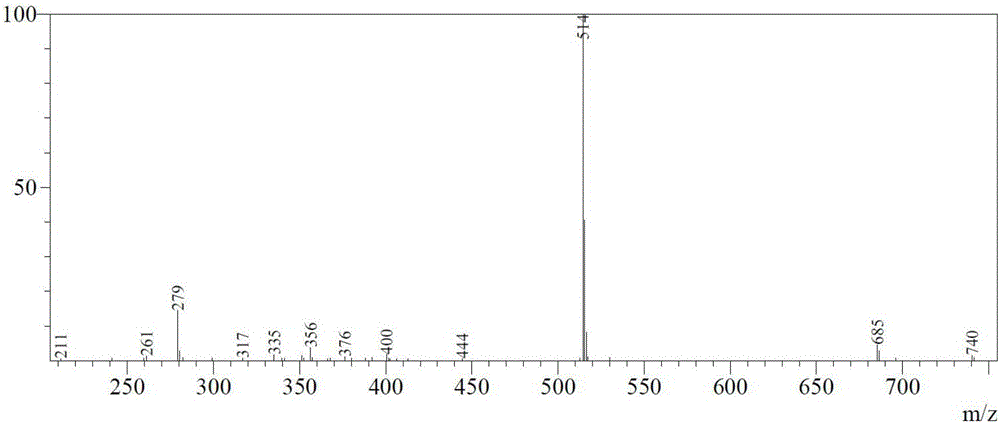Gallocyanine fluorescent probe based on aggregation-induced luminescent effect as well as preparation method and application thereof
A technology of aggregation-induced luminescence and fluorescent probes, applied in the field of organic compound preparation, can solve problems such as quenching of organic fluorescent compounds, and achieve great application potential, excellent luminescence performance, and easy functionalization.
- Summary
- Abstract
- Description
- Claims
- Application Information
AI Technical Summary
Problems solved by technology
Method used
Image
Examples
preparation example Construction
[0056] Such as figure 1 As shown, the preparation method of the cyanine fluorescent probe based on the aggregation-induced luminescent effect of the embodiment of the present invention includes the following steps:
[0057] S101: Reaction of TPE-CHO with quinoline salt or thiazole salt, the molar ratio of feed is 1:1.5~1.9, the reaction solvent is N,N-dimethylformamide DMF, the reaction temperature is room temperature, and the reaction time is 20min~3h;
[0058] S102: The obtained product is precipitated with diethyl ether and then washed with ethyl acetate or separated by column chromatography. The developing system is methanol:ethyl acetate=1:2.5. Collect the blue segment and spin dry it with a rotary evaporator.
[0059] The preparation method of the cyanine fluorescent probe based on the aggregation-induced luminescent effect of the embodiment of the present invention comprises the following steps:
[0060] Step 1: Reaction of TPE-CHO and quinoline salt, the feeding molar...
Embodiment 1
[0071] 1. The reaction of TPE-CHO and quinoline salt to prepare TPE-VQ:
[0072] Weigh 15mg of TPE-CHO and 23.7mg of quinoline salt, dissolve them in 1ml of N,N-dimethylformamide DMF, stir at room temperature for 20-40min under the catalytic condition of 10ul of triethylamine, the solution turns dark green.
[0073] 2. Separation and purification of TPE-VQ:
[0074] After the obtained product was precipitated with ether, it was separated by column chromatography. The developing system was methanol:ethyl acetate=1:2.5. The blue segment was collected and spin-dried with a rotary evaporator.
[0075] The reaction equation for the preparation experiment is:
[0076]
Embodiment 2
[0078] 1. The reaction of TPE-CHO and thiazole salt to prepare TPE-VS:
[0079] Weigh 10mg of TPE-CHO and 12.1mg of thiazole salt and dissolve it in 1ml of N,N-dimethylformamide DMF. Under the catalytic condition of 10ul triethylamine, stir at room temperature for 2-3 hours, the solution gradually changes from light yellow to deep pink .
[0080] 2. Separation and purification of TPE-VS:
[0081] Take a little of the obtained product, add a small amount of ether and centrifuge, take the supernatant and use ether to precipitate the solid, discard the supernatant. Ethyl acetate was added to the obtained solid and shaken, a small amount of solid dissolved, and the supernatant was discarded.
[0082] The reaction equation for the preparation experiment is:
[0083]
[0084] The application effect of the present invention is described in detail below in conjunction with the mensuration of compound TPE-VQ and TPE-VS:
[0085] 1. Determination of spectral characteristics of TP...
PUM
 Login to View More
Login to View More Abstract
Description
Claims
Application Information
 Login to View More
Login to View More - R&D
- Intellectual Property
- Life Sciences
- Materials
- Tech Scout
- Unparalleled Data Quality
- Higher Quality Content
- 60% Fewer Hallucinations
Browse by: Latest US Patents, China's latest patents, Technical Efficacy Thesaurus, Application Domain, Technology Topic, Popular Technical Reports.
© 2025 PatSnap. All rights reserved.Legal|Privacy policy|Modern Slavery Act Transparency Statement|Sitemap|About US| Contact US: help@patsnap.com



